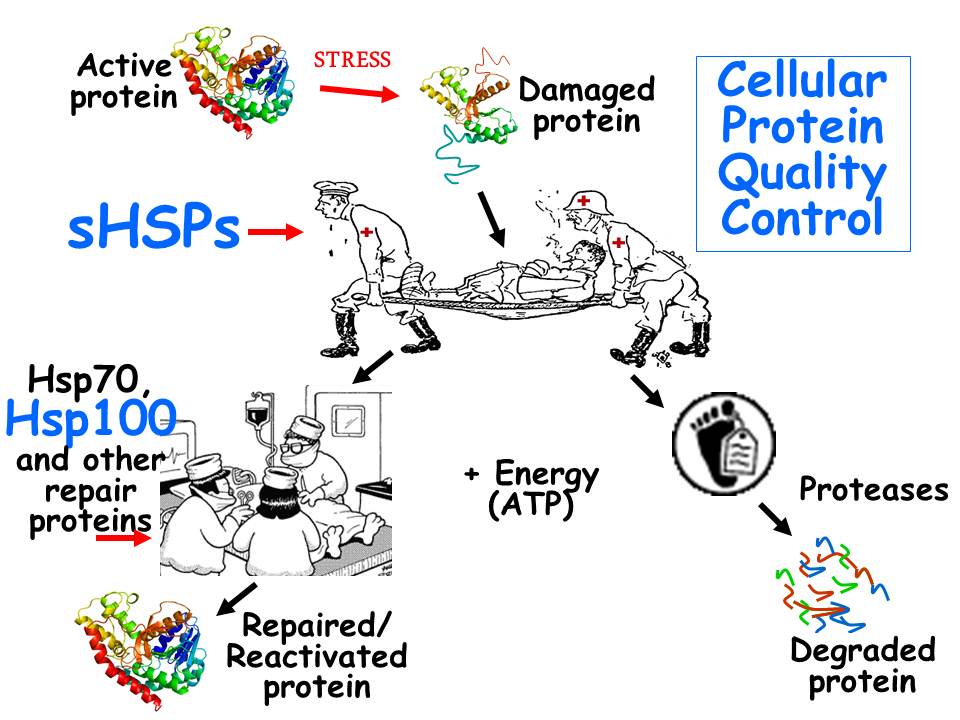The BIG Picture
The Vierling lab has several major research projects concerning molecular chaperones and their substrates, as well as other processes involved in plant stress tolerance, including translational control and regulation of nitric oxide metabolism. Our work spans classical and transgenic plant genetics to biochemistry of individual proteins. We use the model plant Arabidopsis thaliana in all of our projects, but are also working with the cyanobacterium Synechocystis sp. PCC 6803.
Molecular Chaperones
Molecular chaperones are a diverse group of proteins that share the property of binding to other proteins that are in unstable structural states. Chaperones facilitate a range of processes including protein folding, transport of proteins across membranes, modulation of protein activity, regulation of protein degradation, and prevention of irreversible protein aggregation. We have been studying how two classes of molecular chaperones, the Hsp100/ClpB proteins and the small heat shock proteins function in higher plants.
Nitric Oxide
Nitric oxide (NO) is an endogenously produced radical gas that affects diverse physiological responses in plants, including stomatal movement, flowering, pathogen response and germination. We have found that mutants of the enzyme S-nitrosoglutathione (GSNO) reductase (GSNOR) (“hot5” mutants) accumulate excess NO species and have reduced heat stress tolerance and dramatically reduced fertility.We are using the hot5 mutant to further dissect the role of GSNOR in nitric oxide homeostasis in plants.
Translational Regulation
It is well known that stress modulates translation. We have found that specific translation factors are associated with sHSPs during stress and that a mutation in a translation initiation factor results in loss of heat tolerance. We are investigating the role of these factors in stress tolerance and translational regulation.
